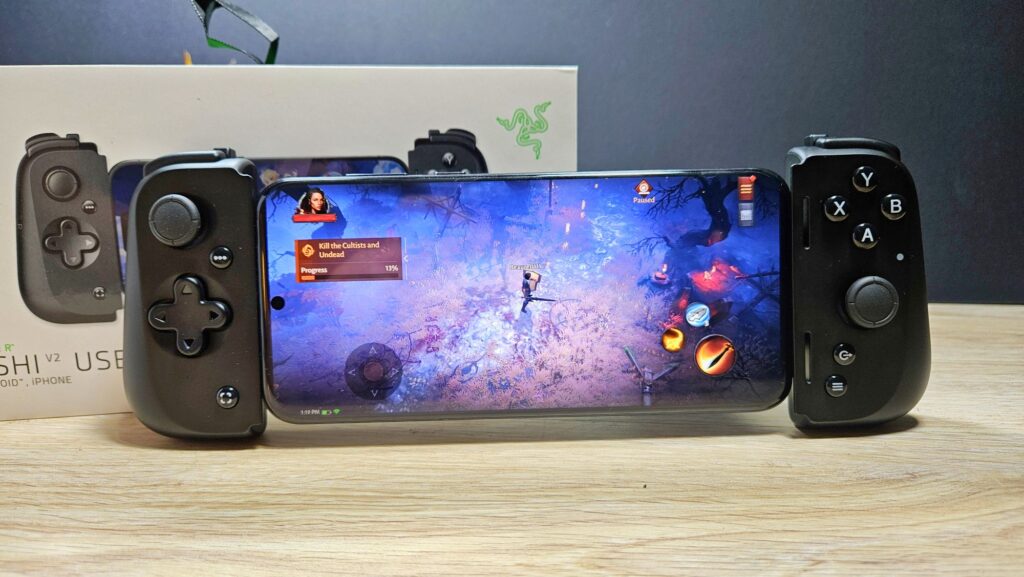
Razer Kishi V2 USB C review – Getting the Mobile Gaming Edge
Mobile gaming is coming into its own with an array of games intended primarily for smartphones including a vast ecosystem of tournaments and professional gamers. For gamers seeking a decisive tactical edge and to overcome the limitations of a touchscreen interface for mobile gaming, Razer has issued a more refined incarnation of their Kishi controller, that is compatible not only with Android phones as well as Apple’s iPhones from the iPhone 15 onwards.
We managed to get one for field testing and took it around for a whirl. Here’s our Razer Kishi V2 USB C review where we share it warrants your money…
Razer Kishi V2 USB C review – Build and Design
Table of Contents
The successor to the original Razer Kishi with a lighter, more refined design from its predecessor, the upgraded Razer Kishi V2 USB C still retains the same design principles while being 40g lighter, weighing in at 123g.
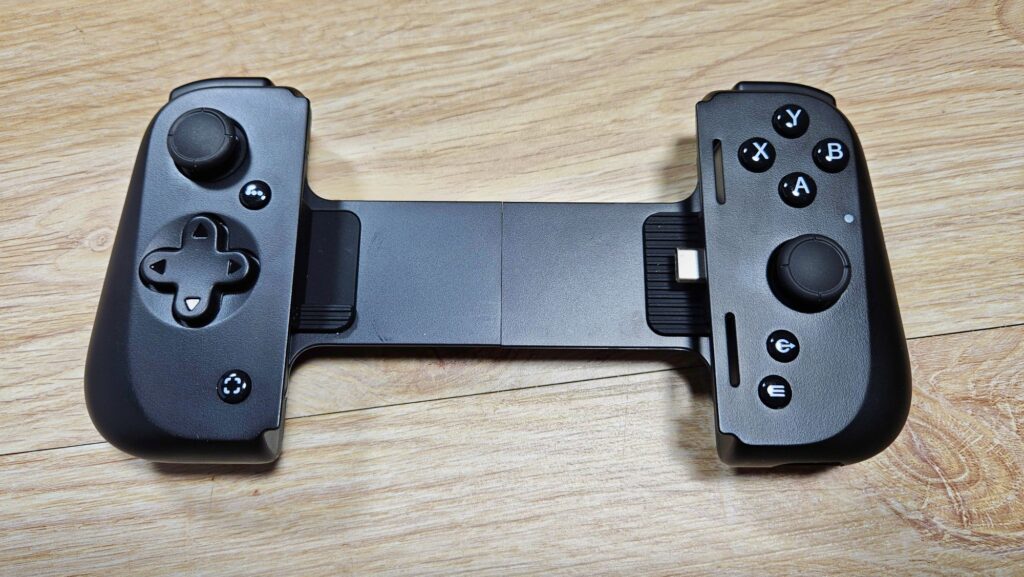
Our Razer Kishi V2 USB C review sample retains the same H-shaped design done up in matte plastic with an extendible bridge-shaped framework that is intended to stretch out and cradle a phone in between them, creating a look that’s not unlike a Nintendo Switch. complete with a textured underside for a more comfortable grip.
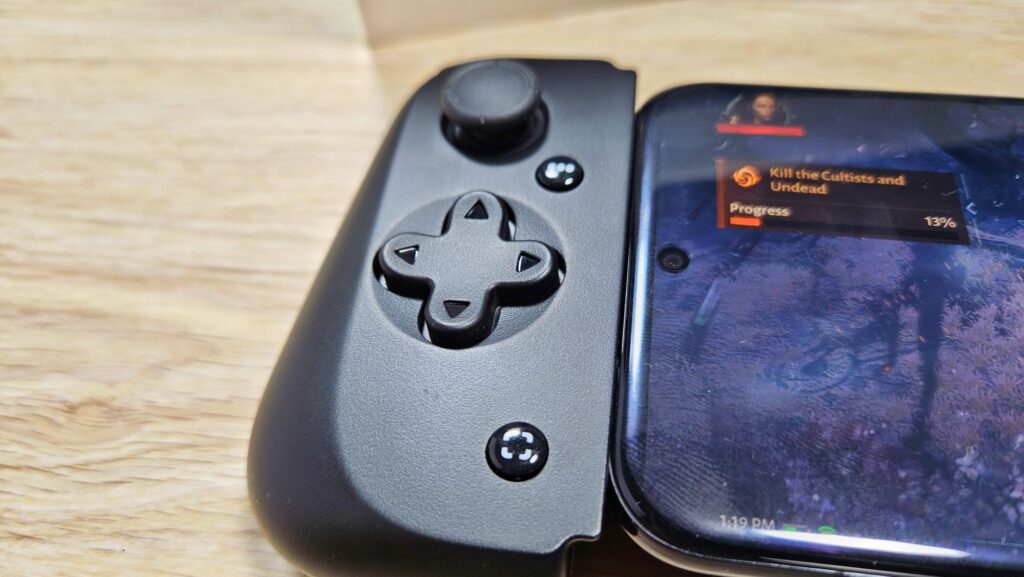
On closer inspection, the left side hosts a direction pad and thumbstick along with dedicated buttons to bring up the options menu in supported games and a screenshot button in case you need to capture something in a hurry.
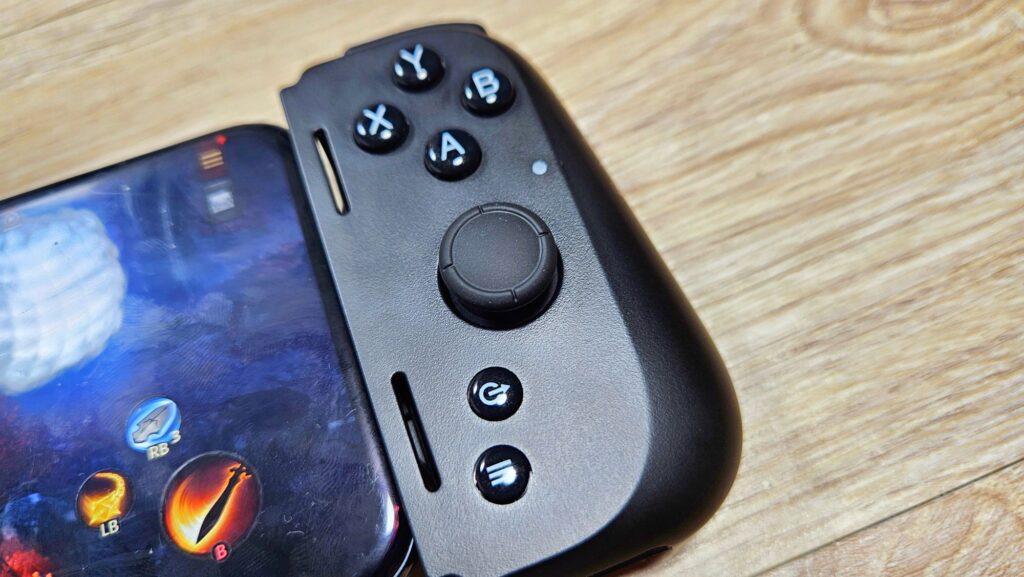
The right side of our Razer Kishi V2 USB C review unit has the customary X,Y,A and B buttons, an additional thumbstick, a dedicated button to bring up the free Razer Nexus app along with another button to summon the ingame menu. Also inset into the right side is a USB-C port for pass-through charging along with an additional male USB-C port to connect with a docked phone. You also get a tiny LED status indicator light next to the thumbstick.

The bridge-shaped connector is spring-loaded so that it clamps onto a phone with modest bit of force and has quite a bit of leeway, allowing for you to shoehorn in phones up to 6.8-inches or about 17 cm in length. This effectively encompasses almost all major phones in service including foldable phones too like the Galaxy Z Fold5 and Honor Magic V2.
Up top on both the left and right halves where your index fingers would rest are a set of three shoulder trigger buttons, with one on each side allowing for programmable macros. The underside of both halves also host a textured grip for better ergonomics.
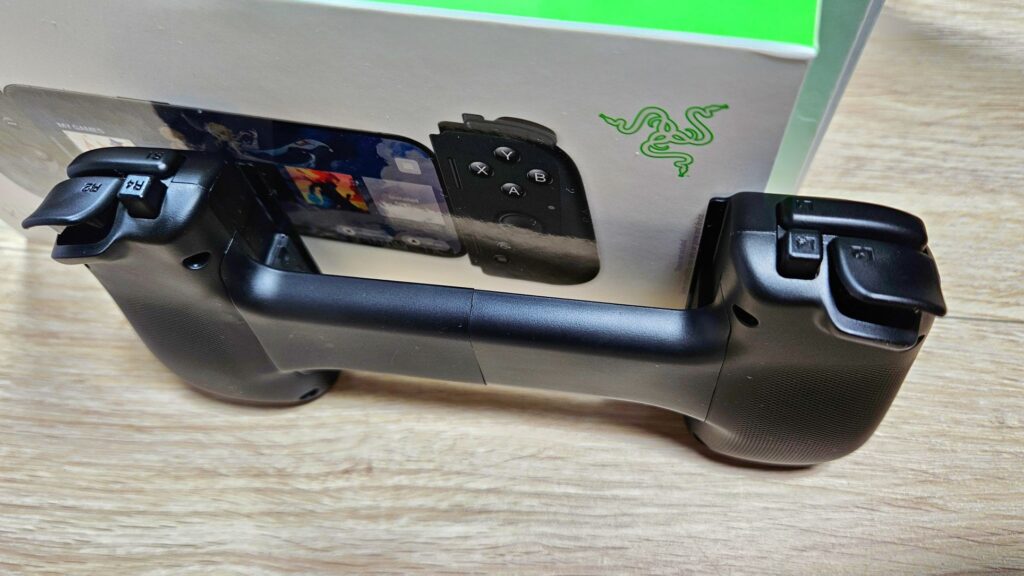
Overall build quality is solid and the bridging mechanism worked smoothly over the course of the review. Razer has also included microswitches in much of the controls including the direction pad and X,Y, A and B buttons which offer a precise, slightly clicky tactility,
A minor design issue is the shallow depth of the bridge connector which makes it difficult to fit phones with large rear camera housings and phones that do fit require you to remove the case beforehand which can be tedious.
Razer Kishi V2 USB C Review – Performance
Getting it up and running simply requires you to dock your phone into the USB-C port and then installing the free Razer Nexus app on the Google Play Store and the Apple App Store. While installing the Razer Nexus app itself is optional, it acts as a shortcut to access installed games on your phone, lets you remap the programmable shoulder buttons as well as reassign the various buttons for whichever game you’re playing.
Interestingly enough, Razer Nexus has presets for popular games like Warzone and Diablo Immortal such that you can immediately start playing using the Kishi V2 USB C. However, other games like Call of Duty Mobile require you to manually map every button for the Kishi V2 to work which is a tedious chore.

The Razer Kishi V2 fitted with a Huawei Pura 70 Pro
Our Razer Kishi V2 USB C review unit was tested with a Galaxy Z Fold5, a vivo X100 Pro as well as an Honor Magic6 Pro. While the Fold5 and Magic6 Pro fit well, the X100 Pro and its prominent camera housing weren’t able to lie flat into the Kishi V2’s docking section with one portion looking a bit lopsided. Interestingly enough, it was also tested with the new Huawei Pura 70 Pro and it managed to work without issue when tested in Diablo and Warzone which means that the controller itself is compatible with EMUI to some degree
After extended gaming sessions, our Razer Kishi V2 USB C review unit proved to be a delightful upgrade for extended gaming with its ergonomic controls offering better comfort and allowing for more viewable screen real estate as your digits aren’t obscuring the corners and edges twiddling the touchscreen. It does take getting used to especially for mobile gamers who are more accustomed to using a touchscreen but console gamers will take to the Kishi V2 USB C like a duck to water. The addition of the USB-C passthrough is a godsend, especially for extended gaming sessions.
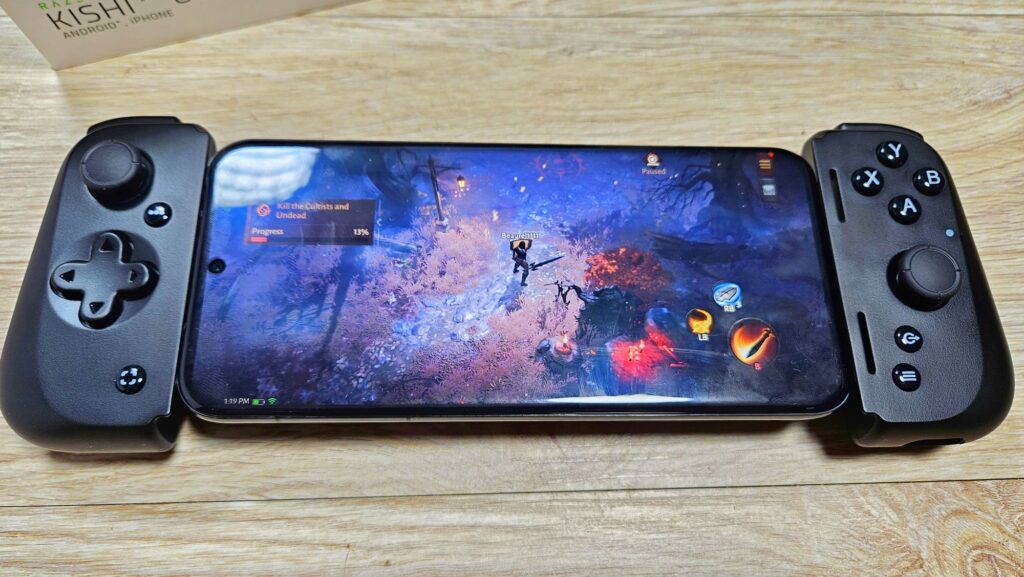
All said, the Razer Kishi V2 USB C is sturdily built and allows for more comfortable, extended gaming sessions with its console-like controls and USB-C passthrough. However, it does not come cheap at RM499 and does not work with especially chunky phones that have large camera housings. Despite these drawbacks, the Razer Kishi V2 is an effective addition to any mobile gamer’s arsenal.
Razer Kishi V2 USB C review sample courtesy of Razer. To purchase please visit their official page at https://www.razer.com/ap-en/mobile-controllers/Razer-Kishi-V2/RZ06-05110100-R3M1
Razer Kishi V2
Razer Kishi V2
The Razer Kishi V2 is an effective addition to the arsenal of any mobile gamer with its comfortable console-like controls and USB-C passthrough though it does not come cheap.
Pros
Offers passthrough charging via USB-C port
Nice tactility and ergonomics
Cons
Design doesn’t quite fit some smartphone designs with large rear camera housings
